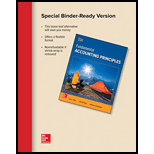
Introduction:
Ratio Analysis
• Ratio analysis is a study of several key metrics of a company based on the data presented in its’ financial statements with an objective to evaluate the financial health of a company.
• It is essential for investors, stakeholders, government bodies etc. to evaluate the key metrics of an entity in order to ensure that the company fulfills the going concern principle and displays financial stability.
The key metrics mentioned above include the following:
• Return on Shareholders’ Equity – A measure of the total earnings of the equity share holders in proportion to the share capital introduced by them.
• It seeks to measure the proportion of the total earnings in relation to the investment made and is an effective way to evaluate how profitable the investment in the company is.
• Price Earnings Ratio – A comparative measure of the Price of equity shares or common stock as compared to the earnings per share.
• It seeks to measure the multiple between the price and earnings per share. The greater the P/E ratio, the higher is the market price and investor expectations from the stock.
• Dividend Yield Ratio – A comparative measure of the Price of equity shares or common stock as compared to the dividend per share.
• It seeks to measure the multiple between the price and dividend per share. The greater the Dividend Yield ratio, the higher is the market price and investor expectations from the stock.
To Calculate:
a) Return on Common
b) Price Earnings Ratio
c) Dividend Yield Ratio for December 2016 and 2017.
Want to see the full answer?
Check out a sample textbook solution
Chapter 17 Solutions
Loose Leaf for Fundamental Accounting Principles
- Can you help me solve this general accounting question using the correct accounting procedures?arrow_forwardI need the correct answer to this general accounting problem using the standard accounting approach.arrow_forwardI am searching for the accurate solution to this general accounting problem with the right approach.arrow_forward
- Please provide the correct answer to this general accounting problem using valid calculations.arrow_forwardCan you solve this general accounting problem using appropriate accounting principles?arrow_forwardSarah is the president and general manager of the operation. Sarah has been very proactive in growing the business. She has met with her banker to discuss expanding the facilities and equipment with another $150,000 loan. Their first loan for $150,000 was secured by the industrial-size food production equipment purchased with the loan. The banker now demands an audit of the corporate financial statements before releasing another loan to the company. Sarah has offered to place the corporate account receivables up as collateral to secure the second loan. Based on revenue projections by her sister Jillian's sales team, Sarah believes that the company will not have trouble paying down the loan in a short period of time. Kim's assistant, Henry, monitors the production and shipment of Smackey Dog Food's regular line of products. Henry takes pride in his work and is involved in every facet of the operation. With only one other warehouse employee to help, Henry personally is involved in…arrow_forward
- I need assistance with this financial accounting problem using appropriate calculation techniques.arrow_forwardDodge Industries has the following data: direct labor $185,000, direct materials used $210,000, total manufacturing overhead $195,000, and beginning work in process $45,000. Compute total manufacturing costs and total cost of work in process.arrow_forwardI am looking for the most effective method for solving this financial accounting problem.arrow_forward

 AccountingAccountingISBN:9781337272094Author:WARREN, Carl S., Reeve, James M., Duchac, Jonathan E.Publisher:Cengage Learning,
AccountingAccountingISBN:9781337272094Author:WARREN, Carl S., Reeve, James M., Duchac, Jonathan E.Publisher:Cengage Learning, Accounting Information SystemsAccountingISBN:9781337619202Author:Hall, James A.Publisher:Cengage Learning,
Accounting Information SystemsAccountingISBN:9781337619202Author:Hall, James A.Publisher:Cengage Learning, Horngren's Cost Accounting: A Managerial Emphasis...AccountingISBN:9780134475585Author:Srikant M. Datar, Madhav V. RajanPublisher:PEARSON
Horngren's Cost Accounting: A Managerial Emphasis...AccountingISBN:9780134475585Author:Srikant M. Datar, Madhav V. RajanPublisher:PEARSON Intermediate AccountingAccountingISBN:9781259722660Author:J. David Spiceland, Mark W. Nelson, Wayne M ThomasPublisher:McGraw-Hill Education
Intermediate AccountingAccountingISBN:9781259722660Author:J. David Spiceland, Mark W. Nelson, Wayne M ThomasPublisher:McGraw-Hill Education Financial and Managerial AccountingAccountingISBN:9781259726705Author:John J Wild, Ken W. Shaw, Barbara Chiappetta Fundamental Accounting PrinciplesPublisher:McGraw-Hill Education
Financial and Managerial AccountingAccountingISBN:9781259726705Author:John J Wild, Ken W. Shaw, Barbara Chiappetta Fundamental Accounting PrinciplesPublisher:McGraw-Hill Education





